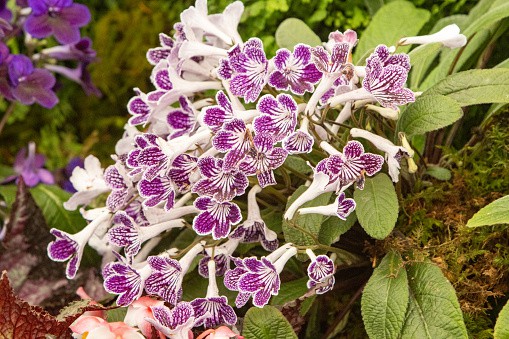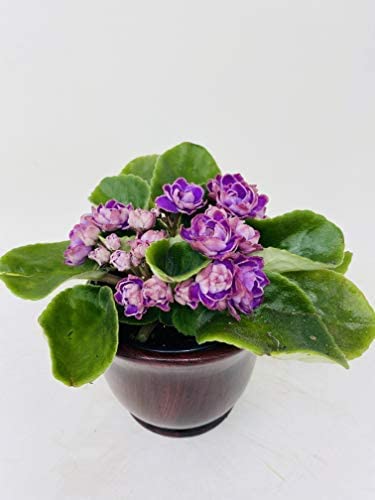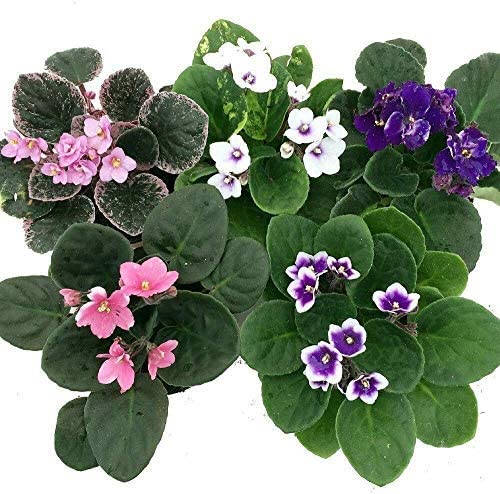African Violet (Streptocarpus Saintpaulia) is a popular flower that grows best indoors and requires special lighting and temperature. These flowers come in a variety of colors and sizes – from miniature varieties to larger varieties with frilly or fringed petals – and make a great addition to any indoor space. The green or variegated foliage has a slight fuzz in texture for added texture, and when placed in adequate amounts of light, these plants can bloom almost every day.
Etymology of Streptocarpus Saintpaulia
The genus name, Streptocarpus, derives from the Greek words streptos, meaning twisted, and carpos, meaning fruit, referring to the curved twisted seed pods the plants produce. The species name, Saintpaulia, honors Baron Walter von Saint Paul, who first discovered it in 1892 while in what is now Tanzania.
How to Plant and Grow African Violets
African Violets require moderate temperatures and light, which makes them well-suited to living indoors and in greenhouses. Much like other flowering plants, they need well-draining soil and regular watering. For the best blooms, they should be placed in bright, indirect sunlight and fertilized regularly. The soil should have a pH between 6.0 and 6.4, and it should not be allowed to dry out completely.
When planting, be sure to plant your African Violet deep and cover the crown, or center of the plant. Make sure the soil is lightly and evenly moistened before planting; it should not be soaking wet. African Violets, especially delicate varieties, should be handled with care when transplanting so their delicate roots don’t get damaged. After planting, be sure to water your African Violet thoroughly and place in bright, indirect light. You should also mist the leaves of your African Violet occasionally to keep the foliage moist.
Meaning and Symbolism
African Violets represent innocence and express a sentiment of luxury and reticence. Other traditional meanings of African Violets are faithfulness, sincerity, and simplicity. In some cultures, they signify good luck when given as a gift and the ability to see and speak the truth.
History, Mythology, and Religious Significance
The African Violet has historically been a symbol of innocence, faithfulness and simplicity. Its strong symbolism has also been seen in some religious beliefs, suitable for the expressions of piety and dedication. African Violets were also seen in ancient Egypt, as an offering to the gods and goddesses. In ancient Chinese medicine, African Violets were used to cure skin issues and diseases.
Buy African Violets on Amazon>>
Flower Varieties and Their Defining Characteristics
African Violets come in many different varieties. These plants typically come in shades of purple, pink, and white, with occasional blues and blues, and there are dwarf and standard varieties. The frilly or fringed petals are often seen as a defining characteristic of African Violets, and their foliage is typically green or variegated.
Buy African Violets on Amazon>>
How to Pot and Repot African Violets
African Violets are small and delicate, so they should be handled with care when potting or repotting. When potting, choose a planter with a drainage hole that is wide enough for the spread of roots. Fill the pot with a soil mix designed specifically for African Violets, lightly water, and place the plant in the center of the pot. It’s important to cover the crown or center of the plant, but make sure not to bury it too deep. Once the plant is in the pot, it should be lightly watered with lukewarm water, and given direct light for optimal health.
When repotting, it is important to be gentle with the roots and to not damage them. If the African Violet has grown too big for its pot, it can be repotted in a slightly larger planter. First, prepare a potting mix specifically for African Violets that has a pH between 6.0 and 6.4. Next, carefully remove the plant from the old pot and place in the new pot. Add the soil mix around the plant and lightly water the plant. It is important to let the new soil settle before fertilizing the plant. After repotting, place the African Violet in indirect light and protect it from strong drafts.
How to Prune
Pruning African Violets is an important part of their care. Prune African Violets to keep them from becoming leggy and overgrown. Be sure to use sharp, clean scissors or clippers when you prune, and start by cutting off any dead or damaged leaves and stems. Then, you can start to shape the plant by cutting off any new growth that is extending beyond the vase. When pruning, the key is to clip away only a few leaves at a time. This can help keep the African Violet balanced, while also avoiding giving it too much of a haircut at once, which can stress the plant.
How to Propagate African Violets
Propagating African Violets is an easy and fun way to increase your collection. It’s also a great way to share the plant with friends and family. African Violets can be propagated from leaf cuttings or from the seeds of the flowers. To propagate from a leaf cutting, simply cut off a leaf from the main stem and place it in a moist soil mixture. Make sure to cover the leaf completely and be sure to water often. The leaf cutting should take root in a few weeks. To propagate from the seeds, simply collect the seed pods from the flowers and sprinkle them over lightly moist soil. Water regularly and the seeds should sprout within a few weeks.
Common Pests and Diseases
African Violets can be susceptible to certain pests and diseases, such as aphids, mites, and powdery mildew. To prevent pests and diseases, be sure to only use clean and sharp gardening tools when handling the plant, avoid over watering, and avoid uneven watering practices. It’s also important to keep the foliage dry, which can help prevent fungal diseases. If pests or diseases do occur, be sure to address them as quickly as possible to avoid damaging the African Violet.
Frequently Asked Questions About Streptocarpus Saintpaulia
Q: When should I water African Violets?
A: Water African Violets when the soil starts to feel dry to the touch, but don’t let the soil dry out completely. Water the soil just enough to moisten it and never pour water directly onto the foliage. You should also avoid over-watering, which can lead to fungal diseases.
Q: How long do African Violets typically bloom?
A: African Violets usually bloom multiple times throughout the year, usually spring to late fall. The length of the blooms vary depending on the variety, but the blooms can range from one to several weeks.
Q: Can I put African Violets in direct sunlight?
A: No, African Violets should not be placed in direct sunlight. They prefer bright, indirect sunlight and require protection from strong drafts and temperatures that are too hot or cold.
Fact Sheet
| Name | African Violet Streptocarpus Saintpaulia |
|---|---|
| Family | Gesneriaceae |
| Plant Type | Perennial |
| Mature Size | 4-6 inches |
| Sun Exposure | Bright, indirect light |
| Soil Type | Well-draining soil |
| Soil pH | 6.0 – 6.4 |
| Bloom Time | Spring to late fall |
| Flower Color | Purple, pink, white, blues, and blues |
| Hardiness Zones | Zones 8-10 |
| Native Area | Tanzania |
What we love from Amazon this week
Buy these wonderful flowers directly from Amazon:

















